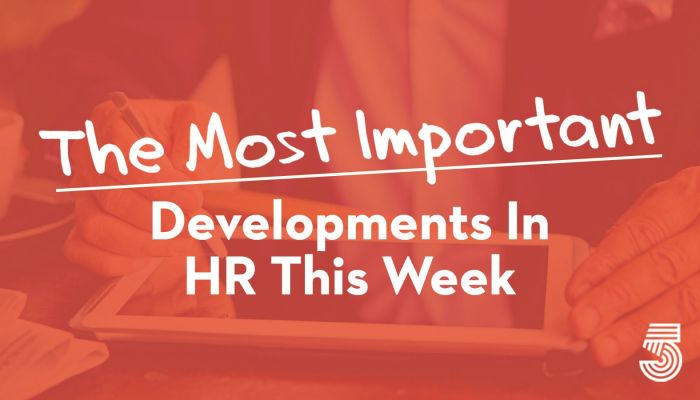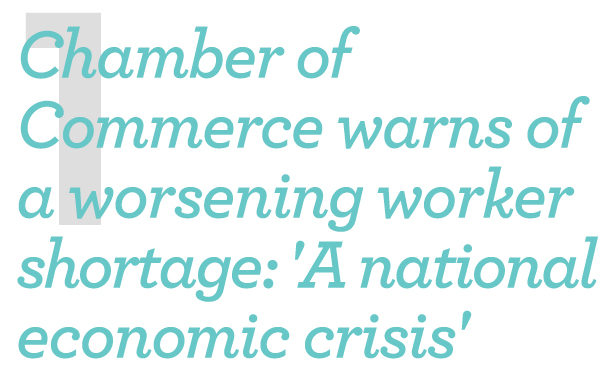
A worker shortage plaguing businesses has continued to worsen in recent months, posing a new threat to the economy’s tepid recovery from the coronavirus pandemic, according to a new report published Tuesday by the U.S. Chamber of Commerce. The chamber found the U.S. had a record 8.1 million vacant job openings in March, the last month for which data is available — an increase of 600,000 from February. But there are only half as many available workers for each open job — roughly 1.4 available workers per opening — as there has been on average over the past 20 years. “The worker shortage is real — and it’s getting worse by the day,” Chamber of Commerce President and CEO Suzanne Clark said in a statement. In some industries, such as education and health services, as well as professional and business services, there are actually fewer available workers than the total number of available jobs. In fact, 90% of respondents said that a “lack of available workers” is the main factor hindering economic growth in their area. FOX Business

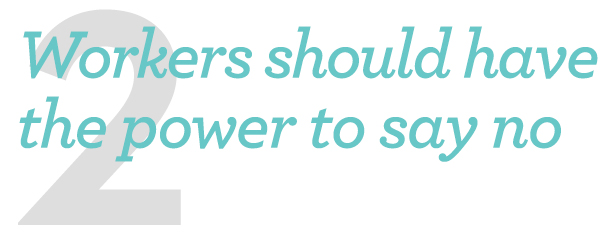
The evidence of a labor shortage comes both from hard numbers and from soft anecdotes. Employers report that they have 8.1 million positions open, the largest number in recorded history. Yet the number of Americans taking a job remains subdued: Payrolls grew by just 266,000 in April, when many economists expected a number as high as 2 million. Workers would rather stay home and collect the dole than go out and take a job, the argument goes. But surveys of workers indicate many reasons why workers are hesitant or unable to take new gigs. The pandemic is abating, but it is not over. Millions of parents are still struggling with the closure of child-care centers and schools. After a year of immense personal and collective trauma, many people just want to take a beat before committing to a new job. Wages are another pivotal factor. Workers used to making $21 an hour are unlikely to take jobs for $17 an hour — nor would doing so be good for the American economy. And workers used to making $15 an hour, who now have a reasonable expectation that more $21-an-hour jobs will be available in a few weeks, are unlikely to take a job for $15 an hour — nor would doing so be good for the American economy. The Atlantic

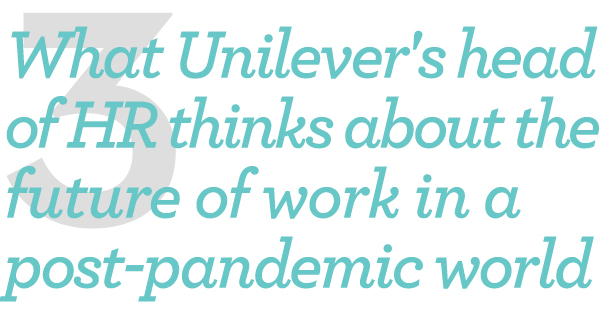
At Unilever, which has more than 150,000 employees — including 90,000 in factories — in 190 countries, Leena Nair, the company’s head of HR, is leading the consumer-product giant’s return-to-work strategy, planning for hybrid working and implementing safety protocols to ensure employees across all sectors of the company feel comfortable returning to their workplaces. Nair recently joined TIME from her home office in London for a video conversation about the workplace in the post-pandemic era. “I believe very passionately that this has to be a moment of reinvention. We’re doing everything with the spirit of experimentation. We have unleashed a four-day workweek experiment in New Zealand. We have experimented with a model called U-Renew, where people can choose to get educated and take a sabbatical and Unilever pays their salary. We are also looking at the best ways to reskill our workforce to ensure everyone can be flexible in the workplace, as well as how they work. WEF’s 2020 Future of Jobs report shows that 40% of core skills will change in the next five years, and 50% of all employees will need reskilling to support business growth. Our ambition is for all employees to have a future-fit skill set by 2025 through reskilling in the company.” TIME

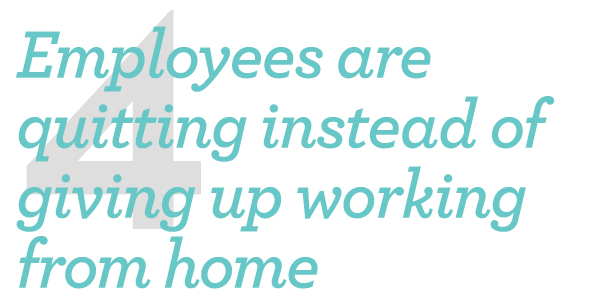
A six-minute meeting drove Portia Twidt to quit her job. She’d taken the position as a research compliance specialist in February, enticed by promises of remote work. Then came the prodding to go into the office. Meeting invites piled up. The final straw came a few weeks ago: the request for an in-person gathering, scheduled for all of 360 seconds. Twidt got dressed, dropped her two kids at daycare, drove to the office, had the brief chat and decided she was done. The push by some employers to get people back into offices is clashing with workers who’ve embraced remote work as the new normal. While companies from Google to Ford Motor Co. have promised greater flexibility, many chief executives have publicly extolled the importance of being in offices. For Twidt, there’s also the notion that some bosses, particularly those of a generation less familiar to remote work, are eager to regain tight control of their minions. “They feel like we’re not working if they can’t see us,” she said. “It’s a boomer power-play.” Bloomberg

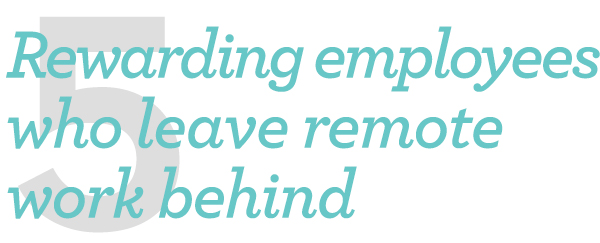
Since April, global real estate data company CoStar has randomly awarded $10,000 each day to a vaccinated employee who returned to a physical office. Additionally, CoStar is awarding vacations to Barbados and flights via the company’s private plane to three employees, and one grand-prize winner will receive a new Tesla. Chief Executive Officer Andrew Florance announces the daily winners each morning with an all-staff e-mail. Welcoming employees back to a physical workplace could enable more-effective onboarding and training, facilitate valuable person-to-person and team collaboration, heighten productivity, make it easier for colleagues to build rapport, and immerse newer employees in the company’s culture. However, recent research shows that getting employees to return to the office will be an uphill battle. Nearly two-thirds of employees would choose a permanent work-from-home situation over a $30,000 raise — one that is contingent upon them returning to the office full time — according to a survey of 3,000 employees from 45 companies. SHRM







